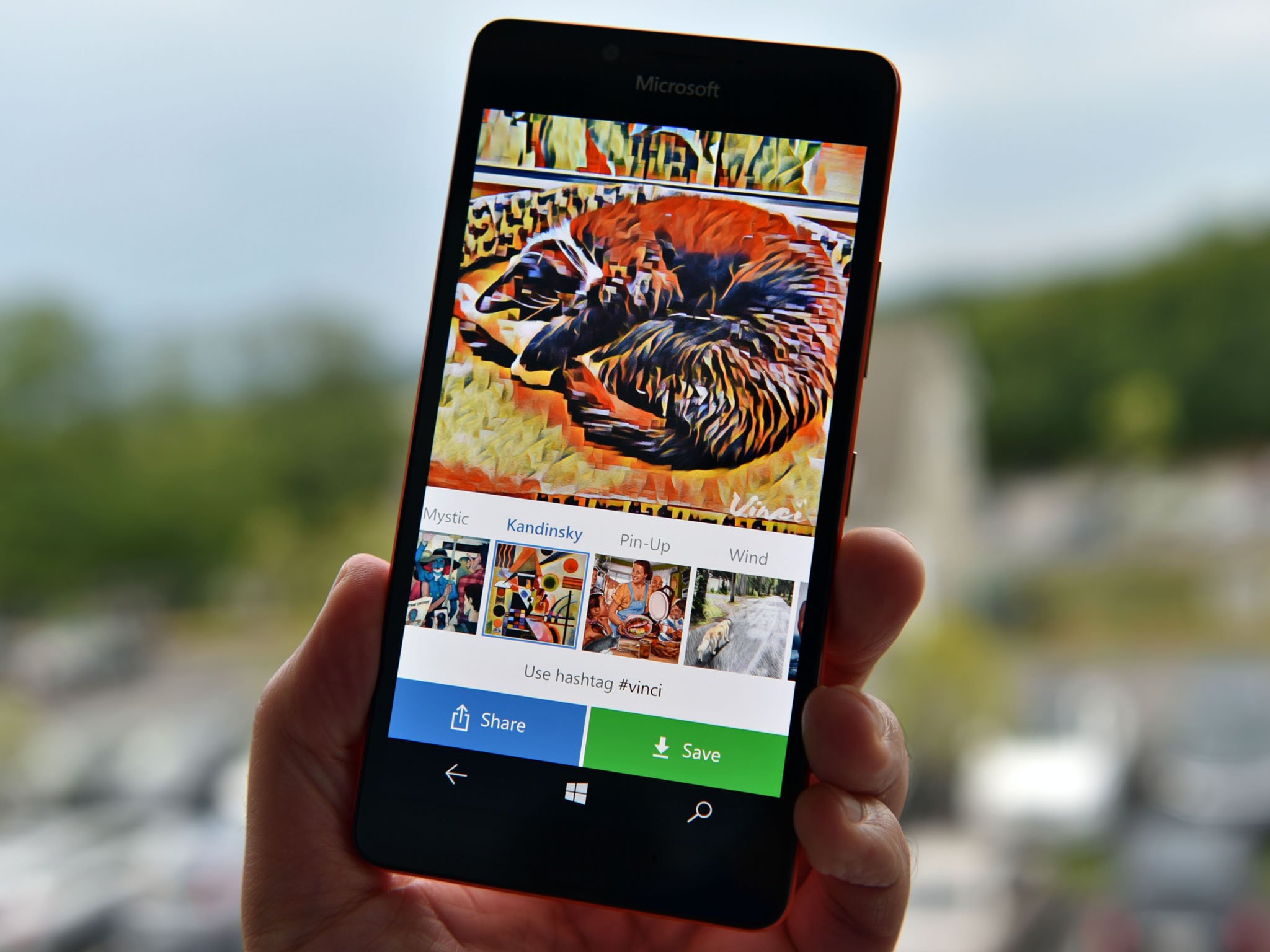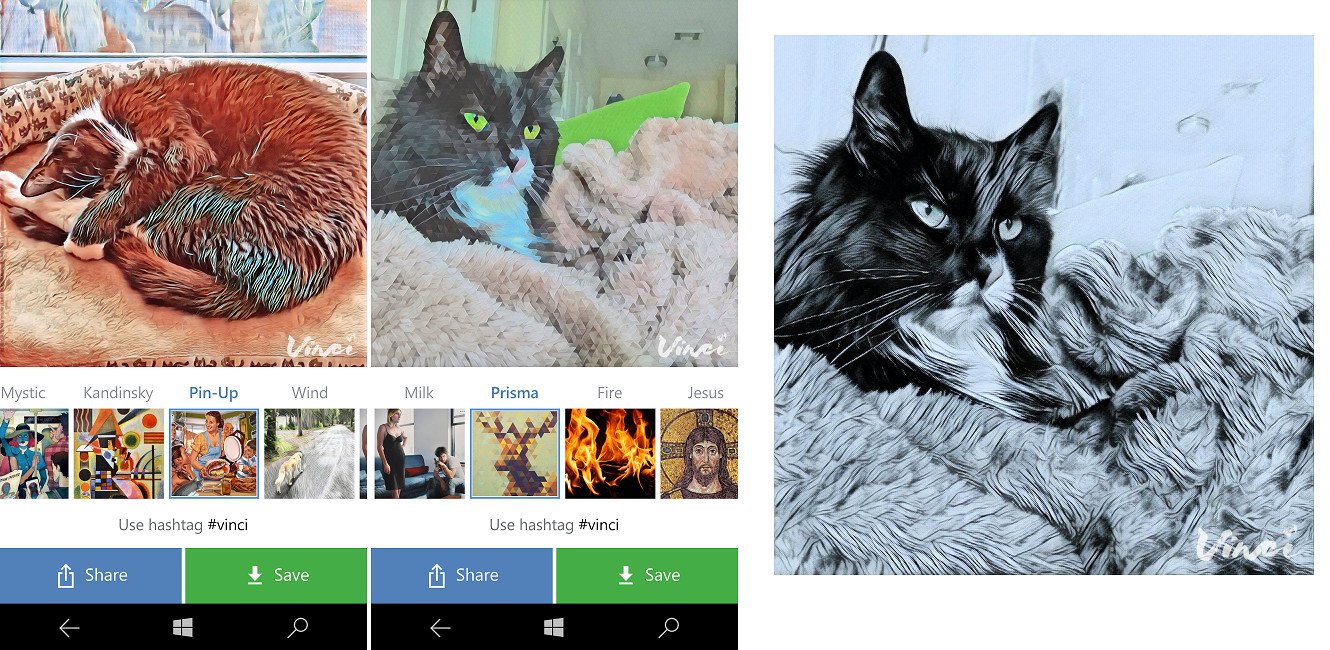Vinci is the first neural network visual app for Windows phone, rivals Prisma

Artsy photo app Vinci from Russian social site VK is now available on Windows phone (8.1 and 10 Mobile). Vinci was released for iOS and Android on July 28 and quickly became one of the top apps in Russia. Now, the same app and features are available for Windows phone users as well.
If your social stream is filled with artsy-looking photos, it may be due to the rise of Prisma, which came to iOS and later Android (there's no sign of it coming to Windows phone despite some earlier confusion). Prisma takes your existing photos and applies non-traditional filters based on various art styles. The process is similar to rotoscoping minus the manual labor intensive process.
Vinci is in the same chic, however, what makes it neat is that it gets help from "neural networks" and is based on recent research cited in "Texture Networks: Feed-forward Synthesis of Textures and Stylized Images". The excerpt from the paper reads:
Gatys et al. recently demonstrated that deep networks can generate beautiful textures and stylized images from a single texture example. However, their methods requires a slow and memory-consuming optimization process. We propose here an alternative approach that moves the computational burden to a learning stage. Given a single example of a texture, our approach trains compact feed-forward convolutional networks to generate multiple samples of the same texture of arbitrary size and to transfer artistic style from a given image to any other image. The resulting networks are remarkably light-weight and can generate textures of quality comparable to Gatys et al., but hundreds of times faster. More generally, our approach highlights the power and flexibility of generative feed-forward models trained with complex and expressive loss functions.
To put that in English Vinci is fast.
In fact, it's nearly instant at around 2 seconds per filter to apply. For comparison, Prisma on iOS running on the iPhone 6s can take between 4 and 9 seconds per filter. While that may not seem a lot in reality when you are shifting through each filter to see which looks the best, it is draining to use Prisma (the Android app is no better, and maybe even worse).
Not all is fantastic, however. One limitation of Vinci is there are no gradients for the filters. Right now they are all or nothing. Nonetheless, the technology behind it and prospects for future updates look great. From the press release:
A small team of independent developers, with the assistance of the social network VK, created the app Vinci for Windows Phone 8.1 and Windows 10 Mobile. It's the first mobile app for quick photo editing with the help of neural networks for these platforms. The app is available for users all over the world.Today, users of Windows OS mobile devices can experiment 20 different filters – some of them slightly retouch your photos, others transform the pictures into different art styles or turn images into something beyond recognition. The app functionality is equal to the Vinci app for iOS and Android launched on July 28. Now Vinci takes the first place in top popular apps in Russia's App Store.New filters are already being tested and will be added automatically to the application. The project's developers are working on an easy and quick tool for automatic photo enhance.
I have been using Vinci for a few days on iOS, and the Windows phone version compares very well. The app is fast, reliable and you get the same filter options. For those looking for a way to add some flair to their photos, you should give Vinci a shot. Plus, it's free and has no ads.
All the latest news, reviews, and guides for Windows and Xbox diehards.
Download Vinci from the Windows Store
Thanks, @djweritos, for the tip!


Daniel Rubino is the Editor-in-chief of Windows Central. He is also the head reviewer, podcast co-host, and analyst. He has been covering Microsoft since 2007 when this site was called WMExperts (and later Windows Phone Central). His interests include Windows, laptops, next-gen computing, and wearable tech. He has reviewed laptops for over 10 years and is particularly fond of 2-in-1 convertibles, Arm64 processors, new form factors, and thin-and-light PCs. Before all this tech stuff, he worked on a Ph.D. in linguistics, performed polysomnographs in NYC, and was a motion-picture operator for 17 years.

